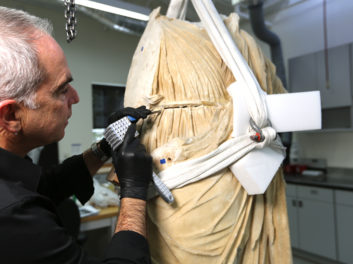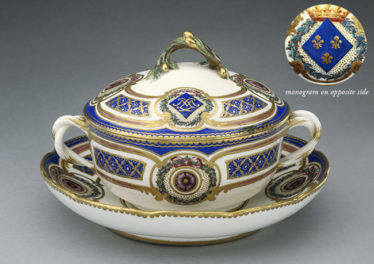We’ve asked members of the Getty community to share short reflections on works of art they’re thinking about right now. These recordings feature stories related to our daily lives.
This week, educator Alice Doo remembers her own California childhood and reflects on the relationship among art, change, and American history through a Dorothea Lange photograph. To learn more about this work, visit: https://www.getty.edu/art/collection/objects/128393/.

Pledge of Allegiance, Raphael Weill Elementary School, San Francisco, negative April 20, 1942, Dorothea Lange. Gelatin silver print, 13 3/8 × 10 1/16 in. The J. Paul Getty Museum, 2000.50.16
Listen to the full series of short reflections here.
Transcript


JAMES CUNO: Hi, I’m Jim Cuno, president of the J. Paul Getty Trust. In a new podcast feature, we’re asking members of the Getty community to share short reflections on works of art they’re thinking about right now. We’ll be releasing new recordings every other Tuesday. I hope you’ll find these stories about our daily lives—from laundry on the line to a dog at a scholar’s feet—thought provoking, illuminating, and entertaining.
ALICE DOO: My name is Alice Doo and I work in our Museum education department. These past few months have been a period of reflection and of learning and unlearning. Learning about my own privilege and my biases and unlearning the racism that is embedded in the American history that I’ve been taught, the culture I am told to value, and the government system that I am expected to trust.
The outpouring of art and photographs on social media responding to police violence, institutional injustice, and protests made me think about how history is being documented. I’m reconsidering the impact art can have capturing pivotal moments and informing our understanding of the world.
I’ve recently revisited a powerful and striking photograph of a painful moment in our nation’s history. It’s called Pledge of Allegiance, Raphael Weill Elementary School, San Francisco by photographer Dorothea Lange. It’s part of Lange’s series documenting Japanese American citizens on the West Coast and their forced relocation and internment, or imprisonment, during World War II.
In this photograph, my eyes are centered on this young girl in her buttoned coat, holding her paper bag lunch in her left hand and resting her right hand over her heart. She is reciting the pledge of allegiance as she stands alongside her classmates. Her eyes look forward, maybe at the American flag or the teacher leading this morning classroom ritual of patriotism.
FDR had signed Executive Order 9066 just a few months before on February 19, 1942. Based solely on racial prejudice, it forced over 120,000 Japanese and Japanese American citizens, like this young girl, to be evacuated from their homes and imprisoned in rural concentration camps for the remainder of the war.
Dorothea Lange opposed the forced relocation and internment, but she accepted the commission of the US government to document it. Her photographs were then hidden from view for decades because they highlighted the injustices taking place.
I find a personal connection with this young girl as an Asian American woman born and raised in California. I had the same bob haircut as a kid and I grew up reciting this same pledge in Elementary school. I share the experience of all the children in this photograph who were taught to stand at attention and pledge their allegiance to flag and country without understanding that if you are Black, Indigenous, or a person of color, “liberty and justice for all” has for most of history not fully represented or protected you.
Today, I’m encouraged by the images and art inspiring social change that I see being created, especially by those who have been largely underrepresented, excluded and oppressed throughout US history. With social media and other online platforms, artists of color now have more avenues to amplify their own perspectives and visual narratives of what’s happening in our world.
CUNO: To view Dorothea Lange’s photograph Pledge of Allegiance, Raphael Weill Elementary School, San Francisco, taken on April 20, 1942, click the link in this episode’s description or look for it on getty.edu/art/collection.
JAMES CUNO: Hi, I’m Jim Cuno, president of the J. Paul Getty Trust. In a new podcast feature, we’re asking members of the Getty community to share short reflections on works of art they’re thinking about right now. We’ll be releasing new recordings every other Tuesday. I hope you’ll fin...

See all posts in this series »








Comments on this post are now closed.